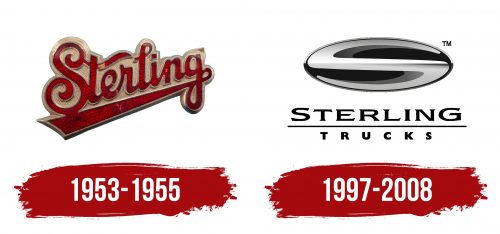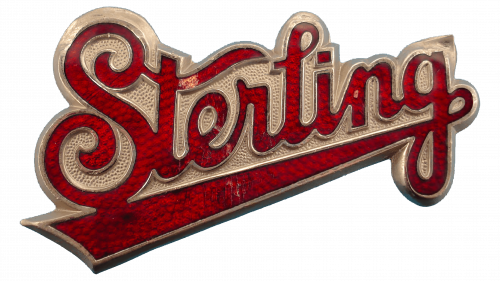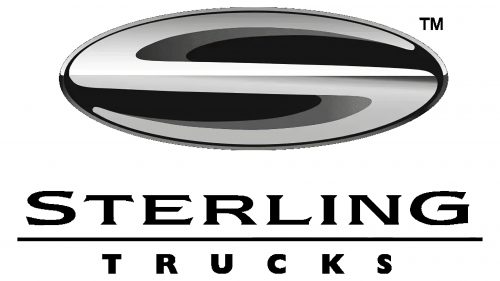The Sterling Trucks logo stands out for its immense internal power and large dimensions, much like the vehicles the company offers. The stylish emblem demonstrates the strength and reliability of the trucks, adapted to meet specific industry needs. Although the company no longer exists, the unique symbol still serves as a reminder of the success of its machinery.
Sterling Trucks: Brand overview
There are two main eras in the company’s history. William Sternberg established the Milwaukee, Wisconsin-based Sterling Motor Truck Company in 1906, marking the start of the first phase. The business began by making heavy-duty trucks, which soon gained a reputation for being dependable and capable vehicles.
Initially, the company focused on producing vehicles for the construction and logging sectors. These industries demanded especially strong and long-lasting cars, and the company successfully produced goods that satisfied these needs.
Like many other American businesses, the company turned to making military hardware during World War I. This greatly increased its production capacity while also aiding in the war effort.
In the 1920s and 1930s, the company experienced development. It added vehicles with a range of capacities for use in many industries to its lineup of products. During this period, the company also started experimenting with diesel engines, a novel technological advancement.
During World War II, the company changed its focus and started manufacturing trucks and other specialty vehicles for the American Army.
After the war, the company started making civilian vehicles again, but there was more competition. Its initial phase as an independent manufacturer ended in 1953 when White Motor Company purchased the business.
The second phase of the company’s history started in 1997 when Daimler-Benz AG subsidiary Freightliner LLC brought the name back to life. Following Freightliner’s acquisition of the heavy truck division of Ford Motor Company, this decision was reached.
The company aimed to bridge the gap between Freightliner goods and the more expensive Western Star (also Daimler) brand. The company concentrated on building medium—to heavy-duty trucks for local transportation, building, and government applications.
The first truck lineup from the rejuvenated brand was unveiled in 1998. It consisted of the L-Line for local and specialty applications and the A-Line for long-haul applications. These models underwent extensive upgrading but were still based on Ford Heavy Truck designs.
With the release of the Acterra model in 2000, the company increased the range of vehicles it offered. This medium-duty truck gained popularity fast because of its dependability and versatility.
The company introduced the Set-Back A-Line vehicle in 2003 to satisfy updated aerodynamic and environmental regulations. As the centerpiece of the lineup, this vehicle strengthened the company’s standing in the long-haul industry.
With the introduction of the Bullet model in 2006, the company joined the light commercial vehicle market. Based on the Ford F-650/F-750 platform, the model was developed in partnership with Ford.
Even with these accomplishments, the company had a difficult time in the second part of the 2000s. Tighter environmental laws necessitated large expenditures in developing new engines, while the 2008 global economic downturn precipitously reduced truck sales.
As part of a reorganization of its North American operations, Daimler Trucks North America declared in October 2008 that it would be ending the production of these trucks. On March 3, 2009, the last truck came off the assembly line, bringing the brand’s second era to a close.
The company grew from a tiny producer of specialty vehicles to a significant participant in the commercial vehicle industry. Despite its brief second life, it contributed to the history of American truck manufacture by providing high-caliber, creative vehicles.
Meaning and History
What is Sterling Trucks?
The American company, founded in 1946, manufactures heavy commercial vehicles. Freightliner, a subsidiary of Daimler AG, owned the brand and produced various vehicles from class 5 to class 8. In addition to highway trucks, the brand specializes in vocational vehicles used in construction, waste management, and other specialized industries. The company was known for offering custom-engineered solutions to meet specific customer requirements. The trucks were renowned for their reliability and efficiency in demanding work conditions.
1953 – 1955
Even though the company specialized in manufacturing powerful large-scale machines for specific tasks, it chose an incredibly delicate logo—soft, gentle, and even somewhat romantic. It consisted of a single inscription stylized as handwritten text with an elegant underline below.
The name was arranged horizontally with a slight tilt to the left, giving the impression that the line was ascending. To achieve a perspective effect (near and far objects in space), the designers halved the size of the last letters and enlarged the front ones. This created the illusion that the inscription was shrinking and soaring far into the sky. This typographic technique added movement to the emblem significantly diversified it and brought the two-dimensional image to life. The emblem’s charm was enhanced by:
- An “S” with curls at the top and bottom resembling spirals;
- A “t” with a wave-like crossbar resembling a light ribbon;
- An “l” with a small shortened loop—graceful and coquettish;
- A “g” with an elongated tail extending under the entire inscription.
Additionally, the underline widened at the beginning of the word “Sterling,” forming a solid platform—an embodiment of the brand’s stability and the reliability of its trucks. The soft, handwritten glyphs left a pleasant impression. The red-crimson letters looked striking against the golden background, as the combination of red and gold symbolizes leadership, energy, resilience, and strength.
1997 – 2008
The Sterling Trucks logo became more thematic, featuring a metallic texture and a silvery appearance, as if covered with a special protective layer—shiny and sparkling. Additionally, the following elements changed:
- Shape (the emblem was redesigned into an oval);
- Color (the colorful palette was replaced by black and white monochrome);
- Inscription (it became two-level and printed).
The horizontal oval served as an excellent background for placing the first letter of the company’s name. To fit harmoniously into the small space, designers compressed the “S” from the top and bottom, resulting in a wide glyph resembling a double-curved element. The presence of a shadow gave it a three-dimensional look, adding a touch of mystery to the emblem, as the elliptical dark background appeared like a black hole with the silvery-white silhouette of the letter “S” hovering within.
The text was centered below and spread across two lines. The top row contained the first word of the brand name. It was rendered in a very elegant and decorative font with sharp serifs. However, the serifs were not straight and needle-like but rather pointed like miniature thorns. This Gothic style did not fit the automotive industry entirely; it resembled the credits of some historical film.
The word “Trucks” was used in a modern font—smooth, even, and bold. All the letters were uniform and did not compete in width or height. The only distinctive feature of the lower line was the large spacing between the glyphs.






